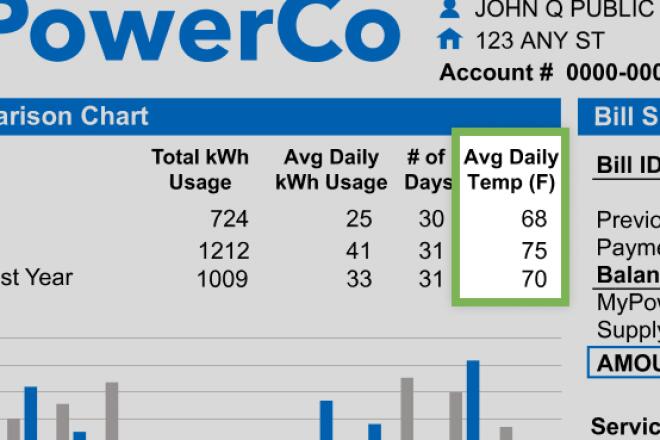
Should You Switch to a New Electric Rate Plan?
When you flip on a light switch at home or turn on your coffee maker in the morning, you’re consuming electricity, which is measured on your monthly bill in kilowatt-hours (kWh).
But did you know that you price you pay per kWh can vary quite a bit?
While a fixed rate plan with the same price per kWh at all times of the day is still standard in many areas, there are now many more options that may be able to help you save on your bills.
In this month’s blog, we take a step-by-step look at determining which rate plan is right for you:
1. Check what plan you’re currently signed up for.
While there’s a good chance that you’re enrolled in a fixed rate plan with the same price per kWh of electricity, there’s a possibility you’ve been moved to a time-of-use (TOU) plan or a tiered plan, which is similar to a fixed plan but the price will increase or decrease after you hit a certain amount of usage for the month. Regardless, an important first step in your rate review process is determining which rate you’re on and what that rate means for how you’re charged for electricity. Check your most recent bill or your power company’s web portal/app to find your rate. If you still can’t find it, contact the power company directly and see what assistance they can provide.
2. Review your household’s typical energy consumption.
Next, you’ll want to see what energy usage data you have available from your power company as this can help you understand the rate plan that may work best for you. Grab your most recent bill or log in to the power company’s app and see how your home is consuming electricity. For example, you may see that your usage varies widely depending on the season, which may mean that a subscription rate – where you pay the same amount every month – is a good option. If you have hourly usage data, you may also see that you don’t use a lot of electricity in the late afternoon/early evening, which could mean that a TOU rate would benefit you greatly.
3. See what rate plans your power company currently offers.
Armed with this information, it’s time to start looking at what is offered by your power company as this can vary quite a bit depending on the area. From step one, you should now know the default rate in your area – likely a fixed rate, time-of-use rate or tiered rate. But there can be other options, like a flat rate that gives you the predictability with the same bill amount each month, a rate that allows you to charge your electric vehicle (EV) at home for a very low rate or even a prepay plan where you add money to your account and get a reminder when your account is getting low. No single plan is right for everyone, so make sure to thoroughly investigate your options and see what makes sense for your home and lifestyle.
4. Ask about bill analysis, shadow billing or other helpful tools.
Finally, many power companies now offer tools that can help you pick a new plan or ease the transition to a new plan. For example, if your power company offers a bill analysis, they can use your usage data from the previous 12 months to show what your bills would be under a new rate plan, and you’ll know whether a TOU rate, for example, is going to benefit you. And with shadow billing, you will see a sample bill on your normal monthly bill that shows the amount you would be paying under a new rate plan. Other power companies will sometimes even offer bill protection for the first year on a new rate plan, meaning you will not lose money if it takes you a few months to adjust to the new pricing.
The good news for you is that you likely now have several options for how you pay for the electricity you use at home, and depending on your specific needs, one of these could work much better. Follow these four steps to become more knowledgeable on your rate plan options and then work with your power company to find the ideal option for you.
To learn more about common rate plan options and what might work for your household, check out our infographic here.
Related Blog Posts


